China’s service robotics sector has evolved from science fiction to real-world necessity. Across restaurants, hospitals, warehouses, and city streets, robots now perform tasks once handled by people—delivering meals, cleaning floors, or disinfecting hospital wards.
The rise of the Robotics-as-a-Service (RaaS) model has made this transformation accessible. Instead of large upfront purchases, even small firms can now lease robots as affordable, on-demand helpers. This shift is reshaping how automation scales across industries.
This article explores how RaaS is revolutionizing Chinese businesses in 2025–2026. Drawing on official data, industry experts, and real-world cases, it reveals how China has become a global leader in service robotics—transforming innovation into widespread, practical value.
Quick Summary: China’s Service Robotics Revolution (2025–2026)
Market snapshot
- China produces over 1.2 million service robots per month (as of May 2025) — the highest volume globally.
- Chinese vendors account for 85% of global commercial service robot shipments.
- The domestic service robotics market is projected to exceed $40 billion by 2025.
Top applications
- Healthcare and elder care: robots assist patients, deliver medicine, and support aging communities.
- Hospitality and retail: robot waiters, concierges, and shopping assistants improve efficiency.
- Logistics and facilities: autonomous robots handle warehouse transport, delivery, and cleaning.
Key insight
China’s Robotics-as-a-Service (RaaS) model eliminates high upfront costs, allowing businesses to rent or subscribe to robots as needed. This flexible system fuels rapid adoption, creating a sustainable and scalable automation ecosystem.
What Are Service Robots?
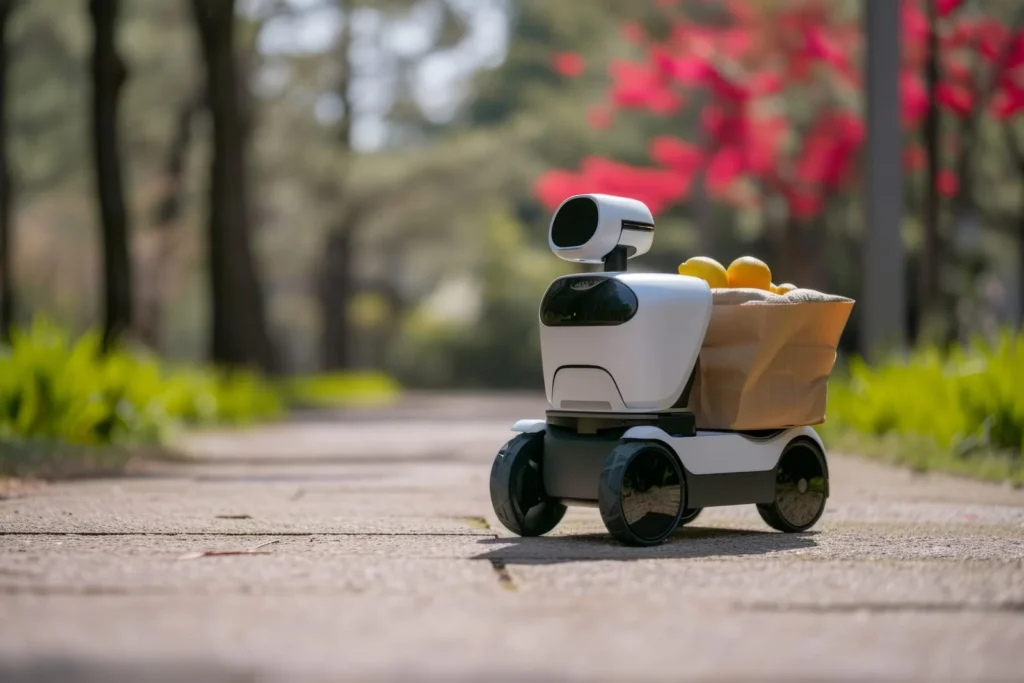
Service robots are machines designed to help humans by performing practical tasks outside traditional industrial settings. Unlike factory robots locked behind safety cages, service robots operate in everyday environments, such as hospitals, hotels, warehouses, offices, and even homes.
According to the International Organization for Standardization (ISO), a service robot is “a robot that performs useful tasks for humans or equipment, excluding industrial automation applications.”
In simple terms, a robot that cleans floors, delivers packages, guides shoppers, or assists patients qualifies as a service robot.
Shared Technologies and Trends
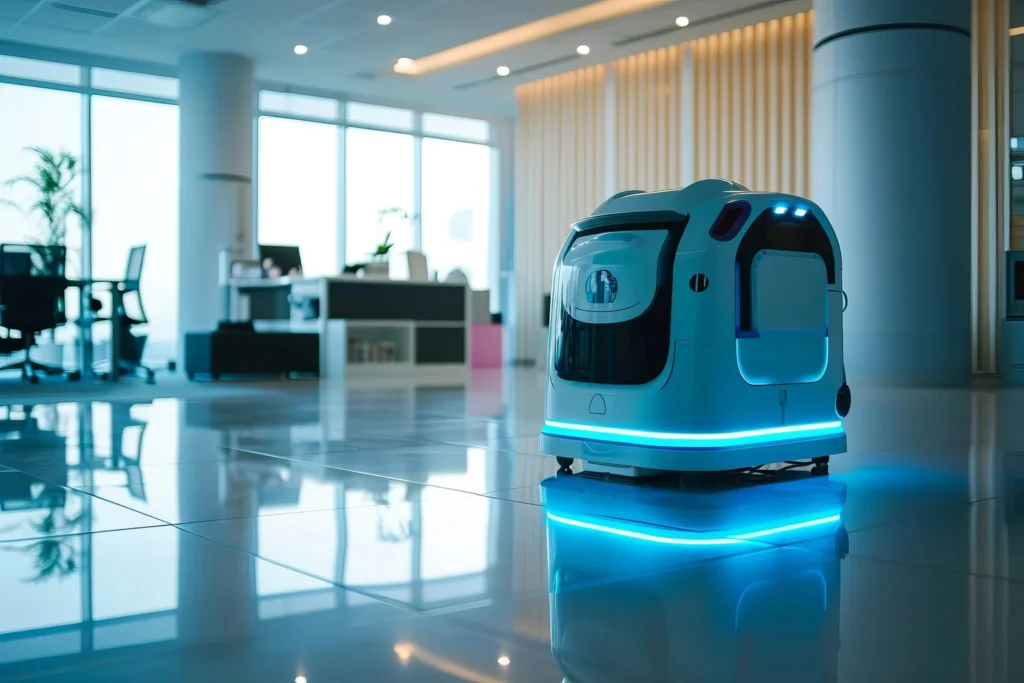
Across categories, service robots share several features:
- Autonomous navigation that allows safe movement in dynamic spaces.
- Artificial intelligence for perception, decision-making, and interaction.
- Human-friendly interfaces that enable collaboration with workers or customers.
Lower prices and more effortless operation are lowering entry barriers for businesses of all sizes. This accessibility has paved the way for a new growth engine: Robotics-as-a-Service (RaaS) — a model that transforms how organizations deploy and maintain robotic systems.
What is RaaS (Robotics-as-a-Service)?
Robotics-as-a-Service (RaaS) is a subscription-based model that allows businesses to use robots without owning them outright. Instead of paying enormous upfront costs, companies rent or lease robots and pay a recurring fee, typically on a monthly, hourly, or per-task basis. The provider maintains ownership, handles servicing, and ensures performance.
This approach shifts robotics from a capital expense (CapEx) to an operating expense (OpEx) — similar to how cloud computing turned software into Software-as-a-Service (SaaS). RaaS provides companies with affordable and flexible access to automation, while vendors manage the complexity behind it.
Key Advantages of RaaS
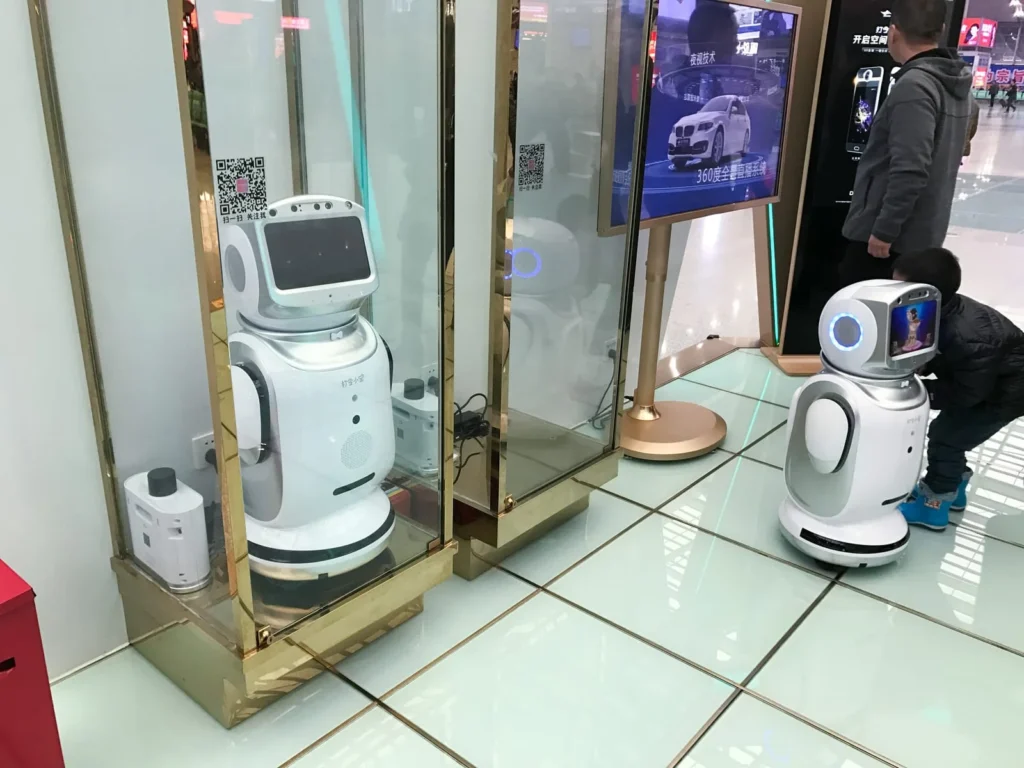
1. Lower Barrier to Entry
Traditional robots require heavy capital investment. RaaS eliminates that hurdle, enabling even small businesses to adopt automation. For example, a small restaurant can lease a robot waiter for a modest monthly fee, rather than purchasing it for tens of thousands of dollars.
2. Cost Efficiency and Predictable Spending
Leasing robots spreads costs and reduces risk. In some markets, the monthly rent for a single service robot is equivalent to half to one-third of a worker’s salary. This affordability enables firms to control labor costs and maintain service quality, particularly in areas where staff shortages persist.
3. Scalability and Flexibility
RaaS operates on a pay-as-you-go model. Businesses can expand or reduce robot fleets as needed — adding units during holiday rushes and returning them afterward. This elasticity mirrors cloud computing’s scalability: companies “deploy” robots on demand instead of maintaining idle assets.
4. Full Maintenance and Upgrades Included
Providers handle all maintenance, software updates, and repairs. Clients don’t need in-house technical teams — everything from diagnostics to spare parts is managed remotely through cloud systems. This ensures high uptime and access to the latest features without additional investment.
5. Continuous Innovation
Because RaaS vendors gather usage data from large fleets, they can improve their robots more quickly. Updates are often pushed over the air, and outdated hardware can be swapped for new models within the same subscription. This continuous upgrade cycle ensures clients always operate with the most advanced technology available.
Why RaaS Works So Well in China
China’s robotics sector has embraced RaaS early and aggressively. Domestic manufacturers offer subscription and leasing options both locally and internationally, supported by strong supply chains and state incentives.
Leading RaaS brands in China include Pudu Robotics, Keenon Robotics, Gaussian Robotics, Youibot, and ECOVACS Robotics. These companies provide delivery, cleaning, and service robots used in restaurants, hotels, hospitals, and factories. Their robots operate on scalable, cloud-connected platforms with real-time performance analytics and remote upgrades.
Lower production costs make Chinese RaaS packages highly competitive abroad, particularly in sectors such as hospitality, logistics, and healthcare. In essence, RaaS transforms robots from luxury investments into affordable, adaptable tools for everyday business operations—fueling automation on a national scale.
China’s Service Robot Boom in 2025
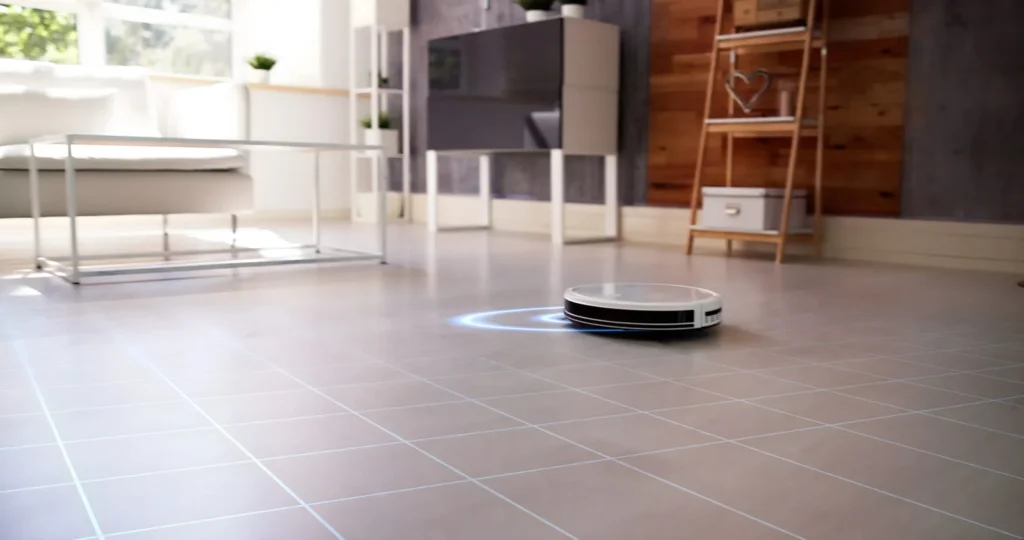
China has become the world’s powerhouse for service robotics, driving production, adoption, and global exports.
Backed by government support and a vast industrial base, the country now leads in both manufacturing volume and real-world deployments across hospitals, hotels, warehouses, and public facilities.
Largest Market and Supplier Base
China has become the world’s largest market for service robots. Industry data projects that the global professional service robot market size will reach approximately $40 billion by 2025, with Chinese companies playing a significant role in driving this growth.
In fact, Chinese vendors accounted for nearly 85% of global commercial service robot shipments in 2024—a remarkable share that highlights China’s manufacturing prowess in this field.
The International Federation of Robotics (IFR) also notes that China is home to 107 service robot manufacturers (as of 2023), the second-highest number after the U.S., and 80% of these Chinese companies focus on professional service robots (as opposed to consumer gadgets).
In short, China isn’t just buying robots from abroad – it’s building them domestically and supplying the world.
Explosive Production Growth
Output has risen sharply. In May 2025, Chinese factories produced 1.216 million service robots, up 13.8 percent year-over-year. During the first half of 2025, production increased by 25.5 percent compared to 2024. Earlier, in 2022, total output reached 6.46 million units, showing sustained expansion.
This surge reflects both strong domestic demand and rapid export growth, powered by economies of scale and highly integrated supply chains.
Government Policy Support
Robotics is a strategic national priority. Through policy blueprints such as the Robot Industry Development Plan (2016 – 2020) and the 14th Five-Year Plan for Robot Industry Development (2021 – 2025), China has set clear targets for innovation, manufacturing, and application.
Local governments reinforce these goals with subsidies, tax incentives, and industrial parks that cluster robot makers and research institutes.
Examples include:
- Shanghai and Shenzhen robotics parks are nurturing R&D and production.
- Beijing E-Town is offering up to ¥250,000 in subsidies through its “robot shopping festival.”
These initiatives create a policy environment that actively rewards adoption and innovation.
Complete Supply Chain and Cost Innovation
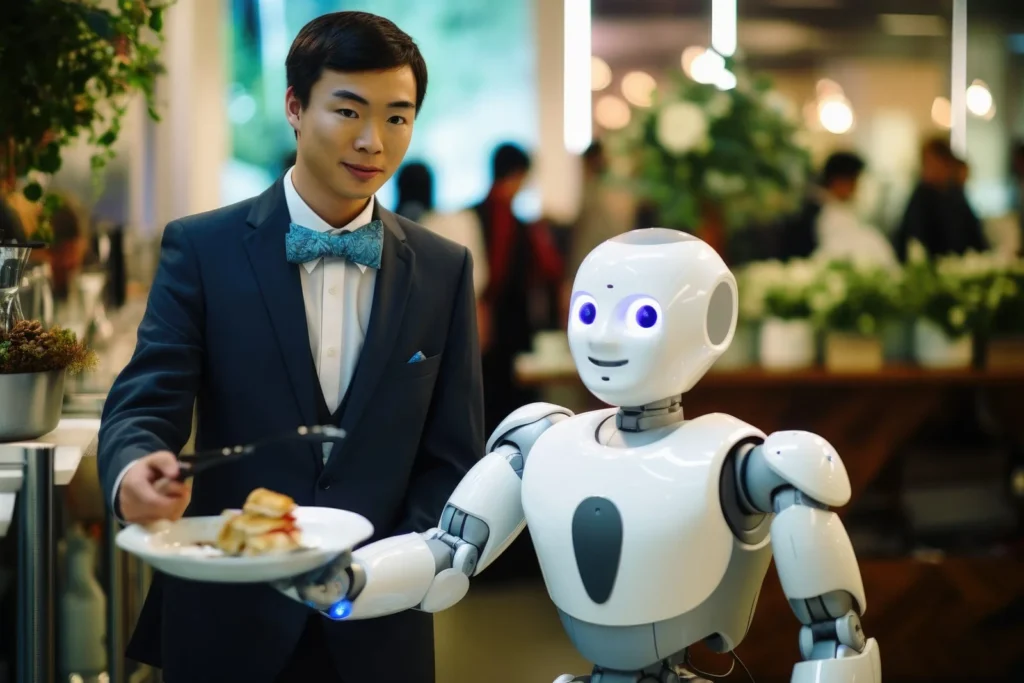
China possesses the world’s most comprehensive robot supply chain, encompassing sensors, servomotors, chips, and assembly all under one roof. This vertical integration reduces costs, shortens lead times, and enhances competitiveness.
As Li Tong, CEO of Keenon Robotics, observed:
“Chinese robots used to deliver 70 percent of the performance at 50 percent of the price; now they deliver 150 percent of the performance at 80 percent of the price.”
Lower hardware costs directly benefit RaaS clients, enabling them to offer cheaper rental plans and achieve faster market penetration.
Rapid Iteration and Data Feedback Loops
Mass deployment creates data, and data drives progress. Connected fleets feed usage insights to engineers, who refine AI models and navigation algorithms. Many Chinese robots operate on cloud platforms that enable remote monitoring, diagnostics, and updates — the backbone of the RaaS model.
For instance, Keenon Robotics released its Operator Model 2.0 AI system in 2025, enabling a single robot to handle multiple service roles via modular software upgrades. This rapid feedback loop enables Chinese robots to advance faster than many of their global peers.
Why China Leads
China’s success is built on a unique combination of policy alignment, capital investment, skilled engineering talent, and widespread user adoption. Together, these factors have made China the most dynamic and cost-efficient environment for scaling service robotics.
In 2025, its ecosystem spans from core components to RaaS-based operations, setting global benchmarks for affordability and speed.
Healthcare and Elder Care: Robots to the Rescue
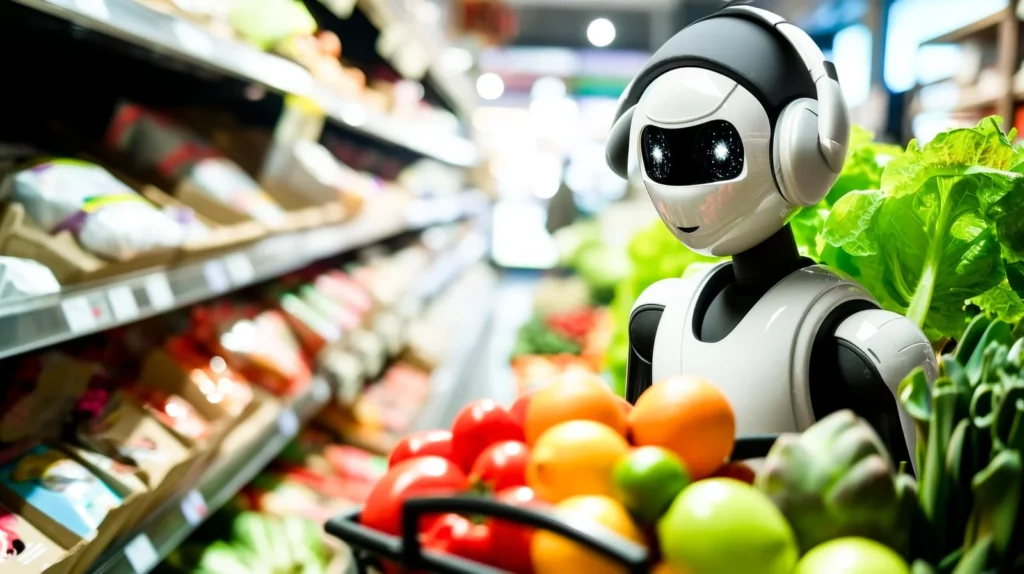
China’s aging population and caregiver shortage are putting pressure on its healthcare system. To ease this burden, hospitals and elder-care centers are rapidly adopting service robots.
The Robotics-as-a-Service (RaaS) model makes these tools affordable and scalable, allowing facilities to lease robots instead of buying expensive hardware.
National Pilot for Elder Care Robots
In June 2025, the Ministry of Industry and Information Technology (MIIT) and the Ministry of Civil Affairs launched a three-year pilot to integrate robotics into elder care.
The goal is to improve seniors’ quality of life and relieve overworked caregivers through the deployment of large-scale robots.
Key features:
- Scope: at least 200 robotic systems tested across 200 households, or 20 robots in 20 institutions.
- Purpose: develop technical standards and evaluation frameworks for elder-care robots.
- Model: facilities lease or trial robots under RaaS agreements, often with government subsidies.
Chinese AI and robotics firms, including Unitree, UBTech, Fourier, and AgiBot, are designing humanoid and companion robots for these trials. They focus on mobility assistance, health monitoring, and emotional engagement. Leasing allows homes and communities to test solutions before committing long-term.
Hospital and Clinic Applications
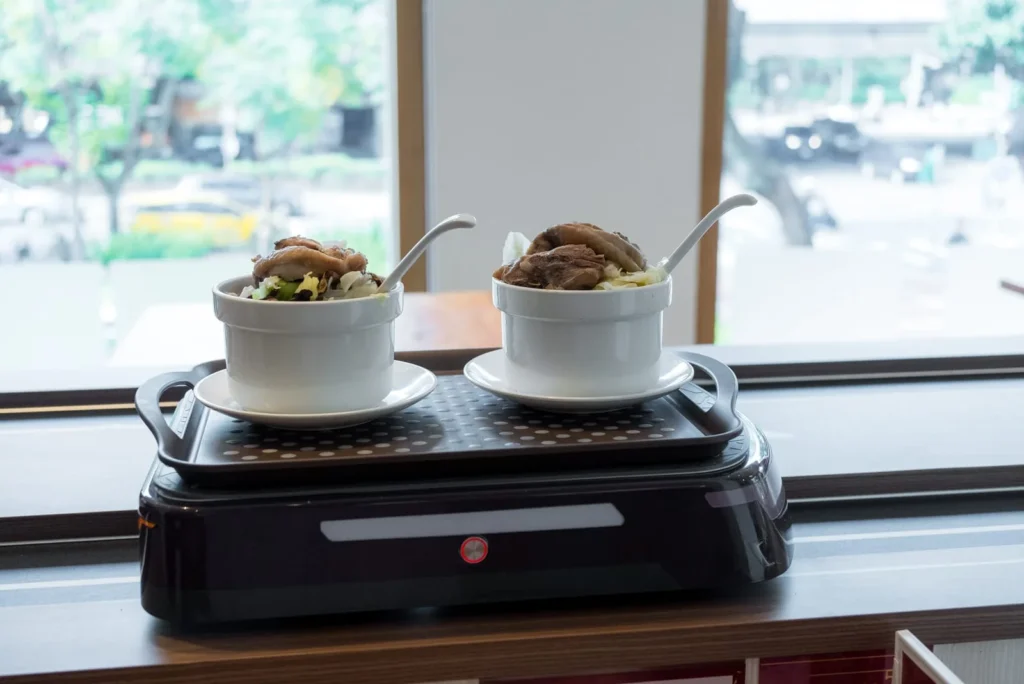
Hospitals across China are now utilizing robots to automate repetitive and time-consuming tasks. During the pandemic, delivery and disinfection robots transported medicine, meals, and samples, limiting staff exposure. That success turned temporary deployments into permanent fixtures.
Today, robots:
- Navigate hallways to deliver supplies and medications.
- Act as receptionists or guides, assisting patients with registration and departmental navigation.
- Operate under RaaS contracts that include maintenance and upgrades.
Rehabilitation centers use robotic exoskeletons and therapy robots for mobility training. Global rehabilitation-robot sales rose 128 percent in 2023, with China leading demand. Through RaaS, smaller clinics can lease these systems or pay per session, expanding access to advanced therapy nationwide.
Elder Companions and Monitoring
Elderly individuals living alone are also benefiting. AI-powered companion robots now remind users to take medication, track vital signs, detect falls, and provide conversational or entertainment features.
Companies such as JD.com and Baidu offer these robots bundled with tele-health subscriptions. Families pay a monthly fee covering hardware, software, and remote medical support — an accurate care-as-a-service model.
Real-Life Impact
Robots are already enhancing eldercare in China by alleviating staff workload, ensuring consistency, and providing companionship. Nursing homes in Beijing and Shenzhen utilize leased patrol robots to monitor residents and alert caregivers in the event of falls. In Shanghai, a humanoid robot led exercise and memory activities, boosting engagement.
RaaS makes such trials affordable, encouraging broader adoption. With government support and proven results, eldercare is poised to become one of China’s key sectors for service robotics.
Hospitality and Food Service Automation

Service robots have become a familiar sight in restaurants, cafés, and hotels across China. These labor-intensive sectors face high turnover and rising costs, making them ideal for the Robotics-as-a-Service (RaaS) model.
Businesses now lease robot waiters, concierges, and delivery bots to maintain service quality while reducing expenses.
Robot Waiters Become Ubiquitous
Serving and bussing tables are repetitive tasks that robots handle efficiently. Companies such as Pudu Robotics (Shenzhen) and Keenon Robotics (Shanghai) dominate this market, each deploying tens of thousands of units across China and abroad.
Key facts:
- By late 2023, Pudu operated nearly 70,000 robots worldwide.
- Keenon’s founder, Li Tong, reported holding over 60 percent of China’s catering-robot market.
Most restaurants rent these robots through RaaS contracts or revenue-sharing agreements. Monthly fees are typically half to one-third of a human waiter’s wage, and maintenance is included. This pricing makes automation accessible even for small, family-run eateries.
Haidilao, China’s hotpot chain, adopted robotic servers in 200 locations as early as 2019. Improved navigation and reliability have since made robot waiters a standard feature rather than a gimmick.
Enhancing Efficiency and Reducing Costs
Delivery robots cut labor costs and boost efficiency (降本增效). At Haidilao, one robot can replace three to four runners during peak hours. While robots handle routine deliveries, staff focus on greeting guests and ensuring quality service.
Customers often enjoy the novelty of filming and sharing their encounters online. This creates free publicity while reinforcing the brand’s tech-forward image.
Hotels and Robot Concierge Services
Upscale and business hotels now lease compact robots that deliver items directly to rooms. These robots autonomously call elevators, navigate corridors, and operate 24/7, eliminating the need for night-shift runners.
Examples:
- Sheraton Guangzhou and InterContinental Beijing use Keenon’s ButlerBot W3 under monthly RaaS plans.
- The Sheraton Tokyo Bay employs the same model for greetings and in-room deliveries.
Front-desk robots assist with check-in, card issuance, and multilingual queries. Some hotels even rent robots for short-term events or holidays for US$30 – $1 000 per day, making fleet scaling simple.
Customer Reception and Adaptation
Initially, customers viewed robot services as a novelty, but they are now mainstream. Chinese diners appreciate the consistency and hygiene robots bring. Viral videos — such as a hotel robot delivering food to a guest — helped normalize their use nationwide.
Manufacturers customize designs for local markets. Pudu’s BellaBot, for instance, features cat ears and cherry blossom decals, reflecting Japan’s kawaii culture, and demonstrating how RaaS adapts globally.
Why RaaS Fits Hospitality Perfectly
- Affordable access: predictable monthly costs and no significant investment.
- Built-in maintenance: vendors handle repairs and upgrades.
- Scalable deployment: extra units can be rented for holidays or conferences.
- Improved experience: faster service, cleaner operations, and positive marketing impact.
With tens of thousands of robots already in operation, RaaS is transforming China’s hospitality industry into one of the world’s most automated service sectors.
Logistics and Retail: Flexible Automation on Demand
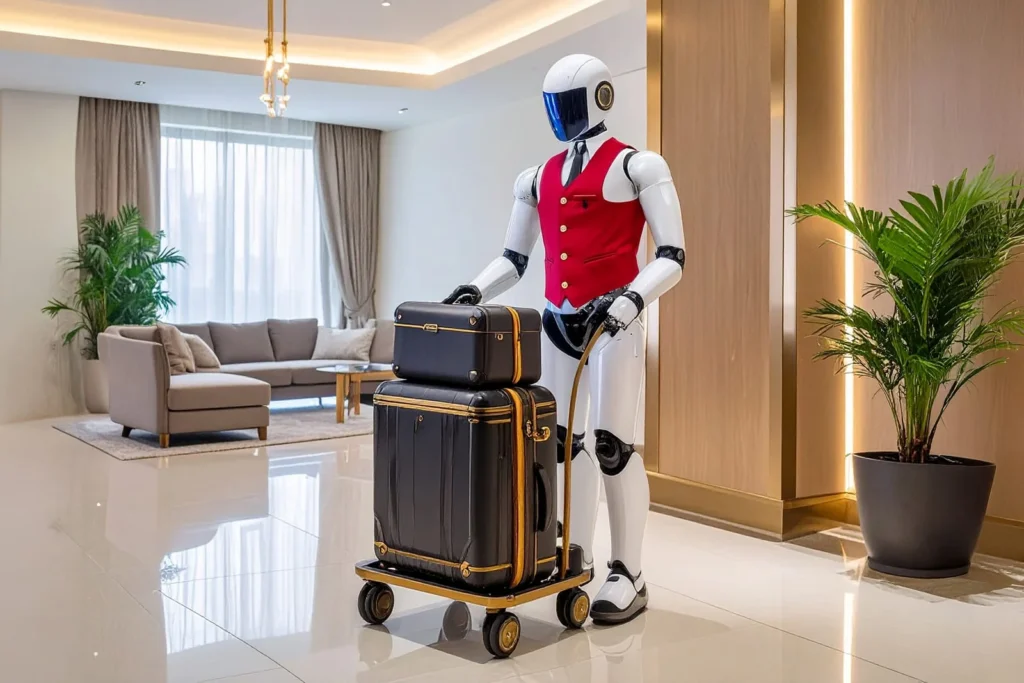
China’s logistics industry — spanning warehousing, e-commerce fulfillment, and last-mile delivery — has become one of the biggest beneficiaries of Robotics-as-a-Service (RaaS). With massive shipment volumes and tight delivery timelines, flexible automation is now essential.
Through RaaS, companies can lease fleets of robots to manage spikes in demand without major upfront investment.
Warehouse Automation via RaaS
Chinese warehouses and fulfillment centers now rely on autonomous mobile robots (AMRs) to transport, pick, and sort goods. Leasing through RaaS gives operators quick access to automation while keeping costs predictable.
- Geek+ (极智嘉) offers monthly or throughput-based subscriptions, rather than outright sales. Clients can scale fleets up or down for peak seasons, such as Singles’ Day.
- Other players, including Syrius Robotics and Quicktron, provide similar on-demand services.
- Logistics landlords like GLP (Global Logistic Properties) combine storage and robotics in one package under their Warehouse + RaaS program.
Results are measurable:
- “Goods-to-person” systems from Geek+ can double or triple picking speed.
- Labor needs drop sharply, and storage use improves by up to 60 percent.
- Some pallet-handling robots increase efficiency fivefold, making them ideal for Alibaba, JD.com, and mid-tier 3PL operators.
China’s AMR market is projected to reach 162.1 billion RMB by 2029, growing at a 33 percent CAGR. By 2024, Geek+ had deployed more than 30,000 AMRs globally. RaaS adoption enables even mid-sized factories to pilot robots, then expand as their performance proves itself.
Last-Mile Delivery Robots
Autonomous delivery carts are revolutionizing the way goods reach consumers. JD.com, Meituan, and Alibaba run fleets that navigate sidewalks, campuses, and communities for contactless delivery — a practice popularized during the pandemic.
Under the RaaS model, logistics firms pay per delivery or per zone, while vendors manage fleets via cloud dispatch systems. As technology improves, the cost per delivery could fall below 10 RMB (approximately US $ 1.50) — cheaper than human couriers.
Cities such as Beijing and Shenzhen have introduced trial zones mapped for robot navigation and are developing legal frameworks for operation. These pilots help logistics companies scale safely and collect real-world performance data before wider deployment.
Retail and Customer Service Robots
In retail, service robots are enhancing customer engagement and in-store efficiency. They act as store greeters, product promoters, and smart shopping carts that scan items and follow customers through aisles. Most are leased through RaaS, with monthly fees or sales-share agreements that lower entry barriers.
Example — 6S Robot Store, Shenzhen (2025):
Operated by Galaxy Aerospace Lab, this retail hub expands the traditional 4S model (Sales, Spare Parts, Support, Service) into a 6S system by adding Subscription.
- Offers robots for sale, rent, or customization.
- Daily rentals cost 5,000 – 20,000 RMB (approximately US $700 – $ 2,800).
- Small retailers can trial automation before making long-term commitments.
Retailers also use RaaS to manage seasonal surges during shopping festivals such as 11.11 or the Spring Festival. Instead of buying hardware, they rent temporary robot fleets and upgrade easily to new models.
Smart Facilities: Cleaning and Security Robots in Action
Beyond restaurants and hospitals, service robots are transforming the management of extensive facilities, offices, and public spaces in China. Cleaning, sanitation, and security once required large teams of humans. Now, Robotics-as-a-Service (RaaS) enables the leasing of robots that clean, patrol, or inspect buildings around the clock.
Autonomous Cleaning Robots
Chinese companies dominate the global commercial cleaning robot market. These machines scrub floors and vacuum large spaces such as airports, malls, and hotels with minimal supervision.
Gaussian Robotics (Gausium), based in Shanghai, leads this field. Its robots clean major international sites, including Singapore’s Changi Airport, Hamad International Airport (Qatar), and Hong Kong’s International Trade Plaza. Most operate under long-term RaaS contracts, which include maintenance and software updates.
Key facts:
- Global shipments of professional cleaning robots in 2022 reached 20,000–25,000 units.
- Gaussian held a 60–70 percent global market share.
- The segment grew 4 percent in 2023, signaling steady maturity.
Chinese property developers such as Vanke now integrate robots directly into their facility-management packages, marketing them as part of “smart building” services. Leasing keeps costs predictable while ensuring 24/7 cleaning coverage.
Disinfection and Public Hygiene Robots
Demand for disinfection robots surged during the pandemic and has remained high. Equipped with UV lamps or spray systems, these robots safely and consistently disinfect hospitals, schools, and transportation hubs.
- TMiRob and Sinopharm Tech supplied large fleets to Wuhan hospitals in 2020 and later expanded to malls and educational sites.
- Facilities can now rent disinfection robots on a weekly or monthly basis, reducing their reliance on manual labor.
- Public institutions, such as libraries and museums, use them for nightly sterilization routines, maintaining hygiene without incurring additional staff costs.
This reflects a lasting shift toward automated sanitation and sustainability-driven operations.
Security Patrol and Inspection Robots
China’s security industry increasingly uses robots for surveillance and inspection.
These robots patrol parks, subway stations, industrial sites, and office campuses, equipped with cameras, gas detectors, and thermal sensors.
Applications include:
- Beijing subway patrols, where robots spot unattended bags or detect fires.
- Beijing Winter Olympics, where robots enforced safety rules and scanned for hazards.
- Shenzhen startups renting quadruped robots for pipeline inspection and factory safety checks.
Most deployments follow RaaS contracts, which are priced per patrol hour or on a monthly subscription basis. Providers handle updates, data security, and regulatory compliance while clients benefit from real-time monitoring.
Authorities are also testing firefighting and emergency-response robots, which are maintained by specialized firms under retainer contracts that ensure rapid deployment.
Smarter Buildings and “Robot-ready” Design
As service robots become standard in Chinese facilities, architects and planners are now designing “robot-friendly” spaces. New malls feature wider corridors and ramps for cleaning robots, while modern office buildings include docking stations on each floor where robots can recharge or discreetly empty trash.
RaaS providers often assist with this planning, helping retrofit buildings for optimal robot performance as part of their service package.
Examples:
- JD’s unmanned supermarkets added ground markers and sensors to guide inventory robots, which were covered by the service provider.
- In Shenzhen’s 6S Robot Store, companies negotiated to showcase their robots as “demo-as-a-service”, demonstrating real-time use in retail environments.
This collaboration reflects a shift toward holistic automation services that include both hardware and spatial integration.
While less visible than robot waiters or humanoid greeters, cleaning and security robots now consistently handle many essential facility tasks—such as floor scrubbing, nighttime patrols, and maintenance—at a cost-effective rate. Supported by China’s vast infrastructure and smart city initiatives, these robots are quickly becoming permanent fixtures in property management.
Challenges and Future Outlook
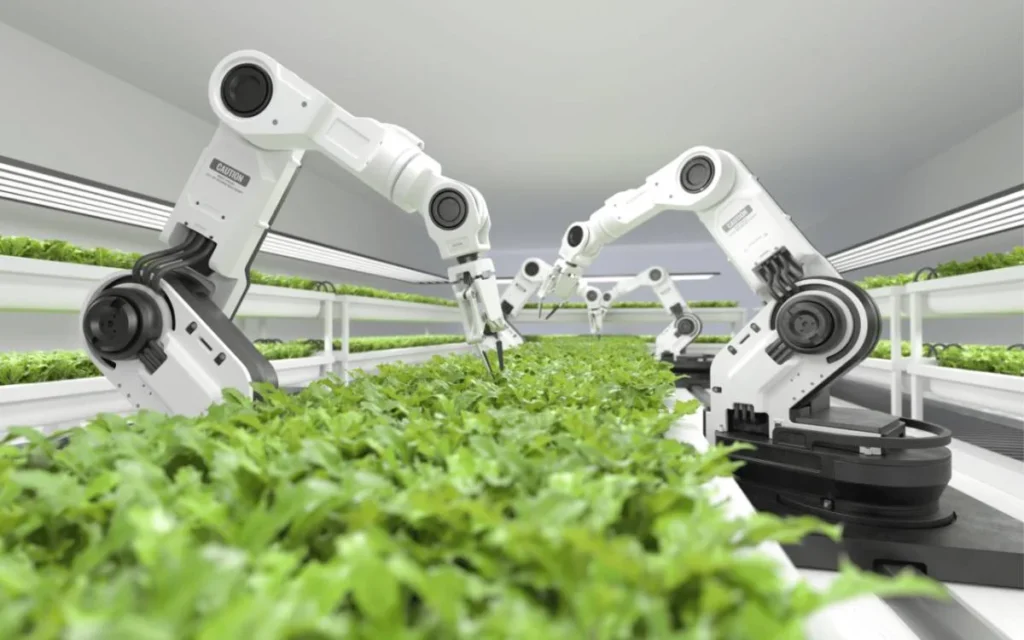
China’s service robot revolution, powered by Robotics-as-a-Service (RaaS), is reshaping entire industries. Yet, sustaining this growth requires overcoming technical, commercial, and ethical hurdles. How China handles these challenges will determine how deeply robotics integrates into daily life by 2030.
Key Challenges about What are Service Robots
1. Core Technology Gaps
Despite huge progress, China still relies on imported sensors, actuators, and force-control systems for high-precision robots. Robots also struggle with unstructured environments, such as cluttered homes, where perception and navigation remain challenging. To close these gaps, the government funds R&D on LiDAR sensors, servomotors, and AI-driven autonomy, aiming to achieve complete localization within the next decade.
2. Market Saturation and Price Competition
As of 2021, China had over 70,000 robotics firms, many of which competed in low-end markets. Aggressive price wars have compressed profit margins and slowed innovation. Leaders such as Pudu and Keenon survived consolidation, while policymakers now push quality over quantity through certified industrial clusters.
3. Data Security and Privacy
Service robots collect large amounts of data in hotels, hospitals, and homes. Regulators now demand stronger data localization and encryption standards. Compliance with global privacy rules (e.g., GDPR) will be critical for Chinese companies expanding abroad under RaaS contracts.
4. Ethics and Social Acceptance
Public concern remains over safety, liability, and job displacement. Chinese scholars advocate for a “human–robot symbiosis” approach, emphasizing collaboration rather than replacement.
Education, retraining programs, and transparent guidelines will be key to long-term social acceptance.
Future Outlook
1. Toward Advanced Robotics
Chinese firms such as Unitree and UBTech are developing humanoids capable of multiple service roles. Integration with AI systems from Baidu, Tencent, and Huawei could soon deliver a “ChatGPT moment for robots,” enabling natural interaction and adaptable intelligence.
2. Standardization and Global Influence
China is building interoperability and RaaS standards for global export. Pilot programs — such as trials of elder-care robots — already include unified evaluation frameworks to promote compatibility and trust across markets.
3. Cloud-Based Fleet Management
Next-generation robot management platforms will enable real-time monitoring, scheduling, and optimization of robot fleets. Powered by 5G, IoT, and AI, these systems will coordinate thousands of units simultaneously, much like cloud data centers today.
4. Policy Incentives and Expansion
Cities including Shenzhen and Beijing offer subsidies of up to 10 million RMB for robotics innovation. By 2030, similar government-backed RaaS programs are expected to reach healthcare, logistics, and rural elder care, ensuring nationwide access to affordable automation.
Bottom Line
China has moved beyond deploying robots — it is systematizing automation through scalable, subscription-based ecosystems. By the end of the decade, the country aims to lead not just in robot production but in intelligent, standardized RaaS exports that redefine how the world experiences automation.
Work with Ashley Dudarenok: Understanding China’s Automation Future

China’s rise in service robotics and the RaaS model is more than a tech story — it’s a reflection of how the country fuses policy, innovation, and scale to reshape industries. If your company wants to understand how these shifts affect retail, logistics, healthcare, or customer experience, Ashley Dudarenok can help you see the full picture.
Ashley is a keynote speaker, consultant, and founder of ChoZan and Alarice, two firms helping global brands decode China’s fast-changing digital economy. Her work brings together insights from AI, automation, and emerging consumer behavior — explaining not just what is happening, but why it matters for global business strategy.
Through executive briefings, advisory sessions, and China immersion programs, Ashley and her team help leaders:
- Examine how the adoption of robotics and AI aligns with China’s broader innovation policy.
- Map the industries and opportunities most impacted by RaaS and intelligent automation.
- Develop a forward-looking strategy for integrating Chinese technology insights into global operations.
If you’re exploring automation, smart service ecosystems, or China’s next phase of industrial innovation, connect with Ashley to discover how her research and programs can support your goals.
FAQs about What are Service Robots
1. How do Chinese startups fund their entry into the service robotics market?
Many Chinese robotics startups secure funding through a mix of government grants, venture capital, and industrial park subsidies. Municipal innovation funds often match private investment, while tech hubs like Shenzhen provide shared labs and tax breaks. This blended model lowers R&D risk, enabling small teams to compete in specialized niches such as delivery, cleaning, and health-service robots.
2. What skills are most in demand for China’s growing service robotics workforce?
China’s robotics boom is creating demand for AI engineers, embedded-systems developers, and human-robot interaction designers. Vocational schools and universities now offer robotics majors focusing on perception algorithms and mechatronics. There’s also a shortage of maintenance specialists trained to operate leased RaaS fleets, leading to new certification programs across major tech cities.
3. How are Chinese consumers responding to service robots in daily life?
Surveys show Chinese consumers increasingly view robots as useful helpers rather than novelties. Acceptance grew during the pandemic when contactless service became essential. In 2025, over 70% of urban respondents reported trusting robots for basic assistance tasks, such as cleaning or delivery, reflecting a strong cultural openness to practical, tech-driven solutions.
4. What role does 5G play in improving service-robot performance?
5G networks give service robots real-time connectivity, enabling faster data transfer between cloud servers and local sensors. This reduces navigation lag and allows multiple robots to coordinate simultaneously in crowded spaces. In China, telecom companies like China Mobile and Huawei collaborate with robot makers to build low-latency communication layers optimized for RaaS platforms.
5. How does China ensure ethical use of service robots in healthcare?
Hospitals adhere to strict guidelines for data collection, privacy, and patient interactions. The National Health Commission mandates that all patient-related data gathered by medical robots be anonymized and stored domestically. Ethical committees evaluate hospital trials to ensure robots complement — not replace — human caregivers. Transparency in robot decision-making is now a formal review requirement.
6. Are service robots environmentally sustainable compared to human labor?
Yes — especially under the RaaS model. Robots typically consume less energy and reduce waste through precision cleaning, optimized delivery routes, and predictable maintenance cycles. Leading Chinese manufacturers are now utilizing recyclable materials and designing modular components for reuse. Energy-efficient charging stations powered by renewables are also being tested in industrial parks.
7. How do small Chinese cities differ from megacities in robot adoption?
Adoption spreads unevenly. Tier-1 cities, such as Beijing, Shanghai, and Shenzhen, are rapidly adopting robots due to higher wages and government support. Tier-2 and Tier-3 cities follow gradually, focusing on cleaning and logistics robots that deliver measurable savings. Local governments often subsidize pilot projects to test RaaS models in hospitals or elderly care centers before scaling them up.
8. How are universities contributing to China’s service-robot ecosystem?
Top institutions such as Tsinghua University and Zhejiang University operate robotics labs that partner with industry leaders for joint research. They develop open-source AI frameworks, sensor calibration standards, and robotic-vision systems. Many graduates join startups through university-backed incubators, helping bridge the gap between academic research and commercial robot deployment.
9. What challenges do Chinese robot makers face in international markets?
Global expansion faces barriers like regulatory approval, language localization, and after-sales support. Many Western markets demand additional safety certifications or compliance with EU and U.S. data privacy laws. To adapt, Chinese firms open local subsidiaries, partner with regional distributors, and adjust pricing to meet different leasing norms while maintaining competitive cost structures.
10. How do insurance companies view the use of robots in workplaces?
Chinese insurers are increasingly offering discounts on premiums for companies that utilize certified service robots, which reduce injury risks. Robots handling cleaning or delivery reduce workplace accidents and claims. However, insurers also require liability clauses in RaaS contracts to define responsibility for malfunctions or data breaches — an area that is still evolving with the adoption of technology.
11. Can RaaS models be applied to agriculture in China?
Yes. RaaS is expanding into smart agriculture, where farmers lease robots for tasks such as crop monitoring, pesticide spraying, and fruit picking. Leasing reduces upfront costs and ensures seasonal flexibility. Pilot programs in Jiangsu and Shandong provinces demonstrate that RaaS robots can reduce manual labor hours by 40% while enhancing yield tracking and sustainability reporting.
12. What is the relationship between service robots and China’s smart-city initiatives?
Service robots form the frontline of smart-city infrastructure, collecting environmental and mobility data. Municipal systems use these inputs for traffic management, sanitation tracking, and safety alerts. Cities like Shenzhen and Hangzhou integrate robot fleets into digital urban dashboards, enabling real-time coordination between robots, sensors, and public service departments.
13. How is human-robot collaboration being designed for comfort and trust?
Chinese developers invest heavily in human-centered design. Robots use soft voice tones, adaptive lighting, and height adjustments to reduce intimidation. Companies like UBTech and Fourier Intelligence run psychological studies on gesture cues and response timing to ensure natural interactions. The goal is to make robots feel helpful, predictable, and emotionally intuitive.
14. How are RaaS contracts structured for Chinese enterprises?
RaaS contracts typically include hardware leasing, cloud-service access, maintenance, and data analytics. Clients pay per month, per task, or per usage hour. Vendors provide continuous software updates and swap older units for new models mid-contract. This ensures stable performance and keeps the client’s fleet technologically current without additional investment risk.
15. What global impact could China’s RaaS model have by 2030?
By 2030, China’s RaaS exports could set global standards for subscription-based automation. Its scale, supply-chain efficiency, and low costs may drive adoption in emerging economies that can’t afford full ownership models. Experts predict Chinese RaaS platforms will power hospitals, hotels, and logistics centers worldwide, defining a new era of accessible robotics.

